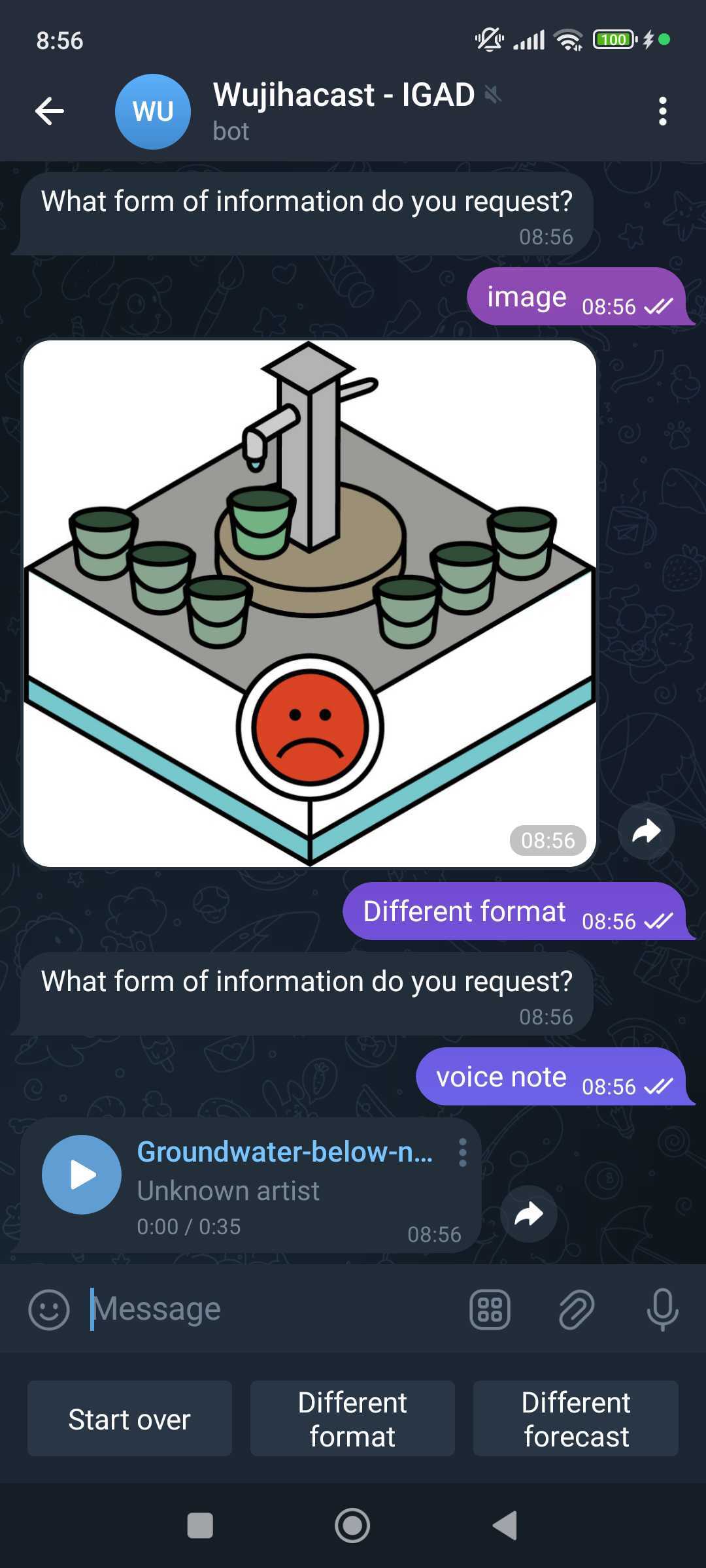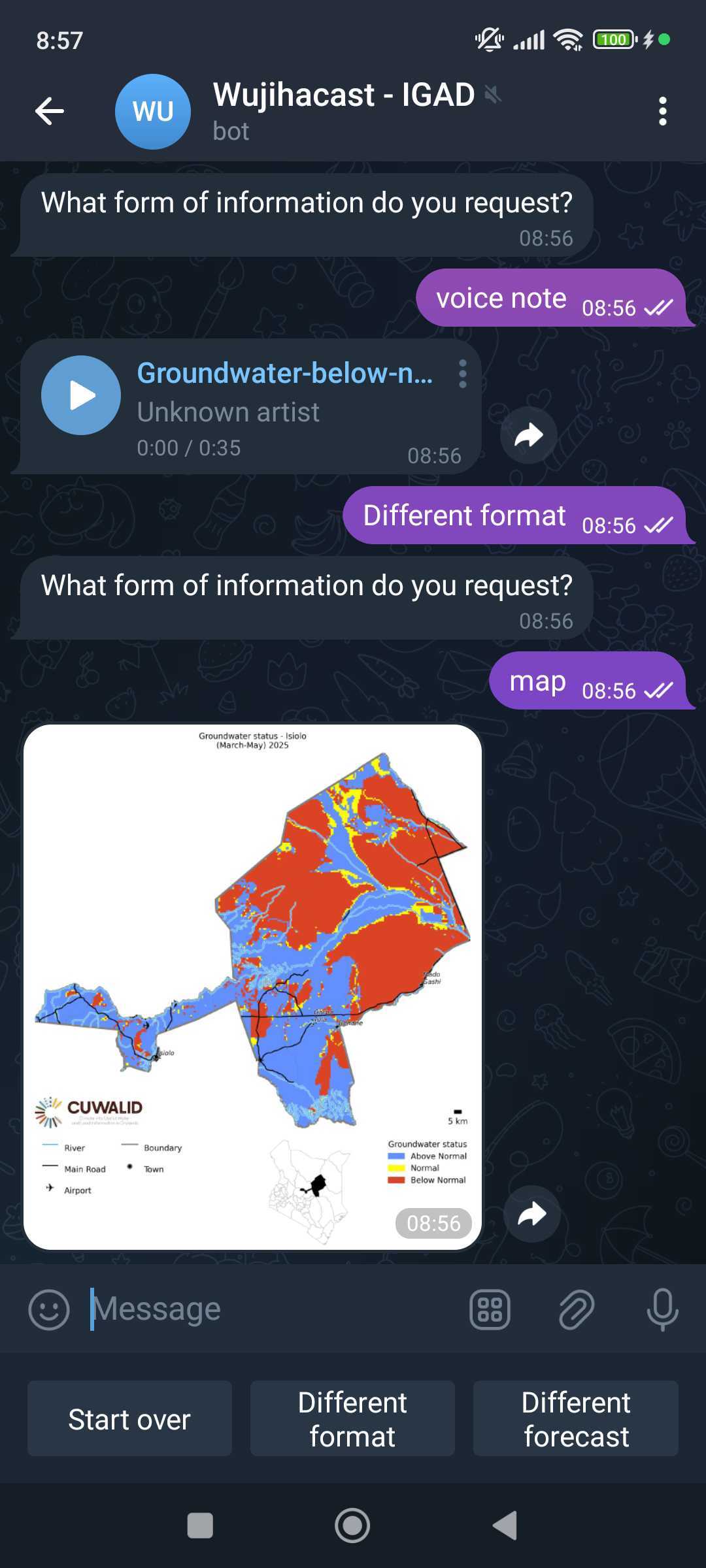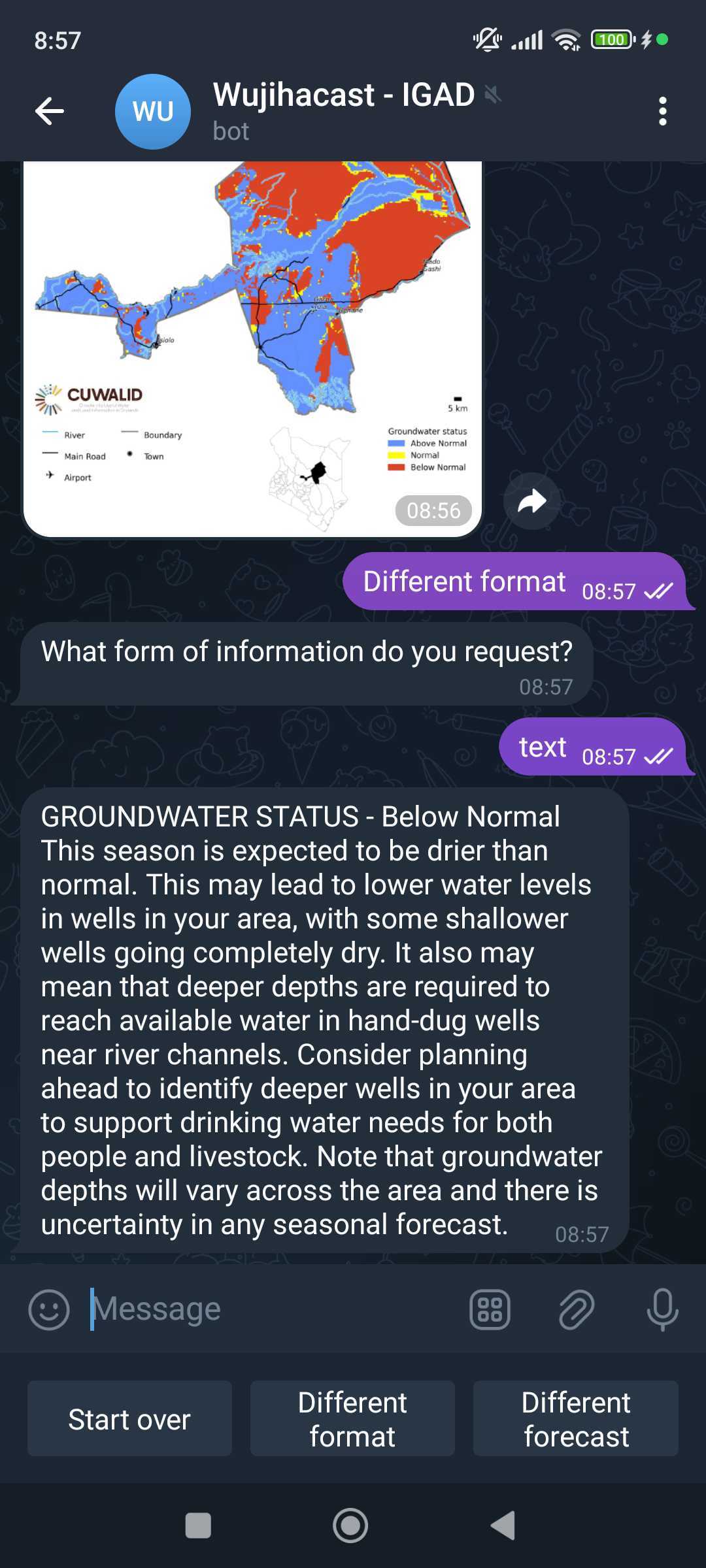Wujihacast Chatbot

Wujihacast Chatbot
An interactive chatbot that provides impact-based seasonal forecasts to help individuals and organizations make informed decisions. The forecasts are provided by the CUWALID models.
or you can scan this QR are code to access the WujihaCast:

CUWALID Modeling System
Developed as part of the EU-funded DOWN2EARTH project under grant agreement No 869550, CUWALID translates seasonal climate forecasts into useful information about water and vegetation, supporting decision-making at multiple levels of society.
Who Can Benefit?
The WujihaCast chatbot is designed for stakeholders in the Horn of Africa Drylands (HAD), including Ethiopia, Somalia, and Kenya.
- Government agencies and NGOs can use it for planning and intervention.
- Farmers and pastoralists can assess the impact of seasonal conditions on crops, pasture, and water availability.
- The general public can access easy-to-understand climate forecasts.
Wujihacast Gallery
Key Capabilities
A Chatbot for Seasonal Forecasts
WujihaCast simplifies complex climate models into clear, interactive responses.
- Forecasts are delivered in four formats:
- Maps
- Images
- Voice Notes
- Text Summaries
- Information is provided on:
- Crop Conditions
- Pasture and Livestock Feed
- Surface Water Availability
- Groundwater Levels
- Flood Hazard Risk
How It Works
- Select a language (Oromo, Amharic, English, Somali, or Swahili).
- Provide location details (auto-detect or manual selection).
- Receive forecast insights tailored to your area.
Democratizing Climate Information
The chatbot ensures that climate data is accessible and actionable.
- Summarizes seasonal climate impacts for different locations.
- Provides recommendations to help users prepare.
- Designed to be easy to use, with support for multiple languages.
Example Forecast:
“This season is expected to be drier than normal. Some shallow wells may go dry, requiring deeper wells for drinking water. Consider planning ahead for water availability.”



